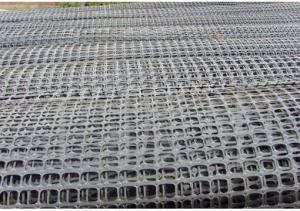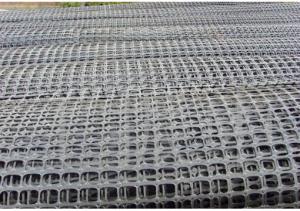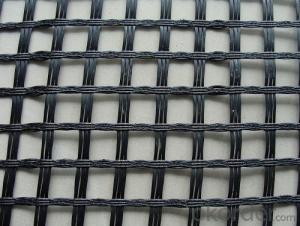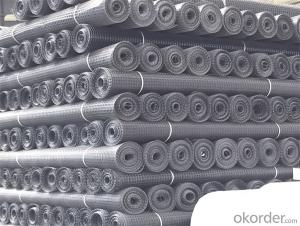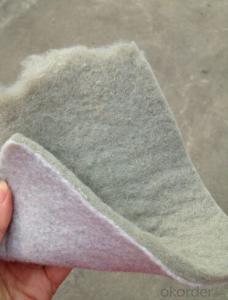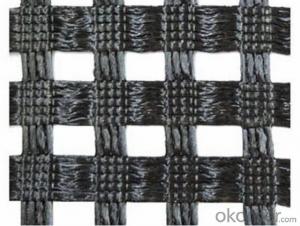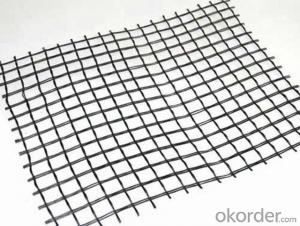HDPE Uniaxial Geogrid with High Tensile Strength for Retaining Wall/Road Consturction
- Loading Port:
- China Main Port
- Payment Terms:
- TT or LC
- Min Order Qty:
- 5000 Square Meters m²
- Supply Capability:
- 12000 Square Meters Per Week m²/month
OKorder Service Pledge
OKorder Financial Service
You Might Also Like
HDPE Uniaxial Geogrid with High Tensile Strength for Retaining Wall/Road Consturction
1. Main Introduction of HDPE Uniaxial Geogrid with High Tensile Strength for Retaining Wall/Road Consturction
In grade separation applications, Uniaxial Geogrids are used to help soils stand at virtually any desired angle; from 0 to 90 degrees. Geogrids can be combined with a wide variety of facing elements in retaining wall and slope applications to produce the desired structural or aesthetic conditions for any project.
Geogrid Reinforced Soil Retaining Walls:
Geogrid reinforced soil retaining walls offer economical and aesthetically pleasing alternatives to conventional retaining wall systems. The geogrid reinforced fill zone behind the wall facing acts as a uniform mass or block, providing stability to the wall and structure. Geogrids work with a wide variety of fill materials and facing elements including segmental concrete blocks, concrete panels, geogrid wraps, timbers or boulders.
Geogrid Reinforced Slopes:
Geogrid reinforced slopes provide a natural and economical alternative to conventional concrete retaining walls. Geogrid reinforced slopes create naturally finished slope structures that are easy to construct and enhance property values because of their natural beauty. Geogrid reinforced slopes can be built at any angle to provide the most economical use of available space while avoiding the increased cost of vertical structures.
The construction of embankments, bridge approach fills, dikes and causeways over soft soils and wetlands traditionally involves expensive, time consuming construction methods. Geogrid reinforcement of these structures minimizes the project footprint, fill requirements and differential settlement, saving time and money
2. Specifications and Technical Data of HDPE Uniaxial Geogrid with High Tensile Strength for Retaining Wall/Road Consturction
No. | Index properties | Test Method | Item(PEUG) | ||||||
60 | 80 | 120 | 160 | 180 | 200 | ||||
1 | Polymer | _ | HDPE | ||||||
2 | Minimum Carbon Black % | ASTM D4218 | 2 | ||||||
3 | Tensile Strength @ 2% Strain MD kN/m | ASTM D6637 | 16 | 23 | 35 | 47 | 52 | 58 | |
4 | Tensile Strength @ 5% Strain MD kN/m | 31 | 44 | 65 | 85 | 104 | 116 | ||
5 | Ultimate Tensile Strength MD kN/m | 60 | 80 | 120 | 160 | 180 | 200 | ||
6 | Strain @ Ultimate Strength % | 11.5 | 11.5 | 11.5 | 11.5 | 11.5 | 11.5 | ||
7 | Junction Efficiency % | GRI GG2-87 | 93 | 93 | 93 | 93 | 90 | 90 | |
8 | Flexural Rigidity mg-cm | ASTM D1388 | 1,400,000 | 2,300,000 | 7,700,000 | 19,000,000 | _ | _ | |
Durability | |||||||||
9 | UV Resistance % | ASTM D4355 | 98 | 98 | 98 | 98 | 98 | 98 | |
10 | Oxidation Resistance % | EN ISO 13438 | 100 | 100 | 100 | 100 | 100 | 100 | |
11 | Brittleness | WashDOT T926 | Pass | Pass | Pass | Pass | Pass | Pass | |
Reduction Factor | |||||||||
12 | Minimum Reduction Factor for | ASTM D5262 | 1 | _ | 1.02 | 1 | _ | _ | |
13 | Reduction Factor for Creep for | ASTM D5818 | 2.23 | 2.23 | 2.23 | 2.23 | 2.23 | 2.23 | |
Dimensions | |||||||||
14 | Roll Width m | _ | 1 | 1 | 1 | 1 | 1 | 1 | |
15 | Roll Length m | _ | 75 | 50 | 30 | 30 | 30 | 30 | |
16 | Roll Weight kg | _ | 30 | 27 | 23 | 29 | 33 | 36 | |
3. Some Photos of HDPE Uniaxial Geogrid with High Tensile Strength for Retaining Wall/Road Consturction
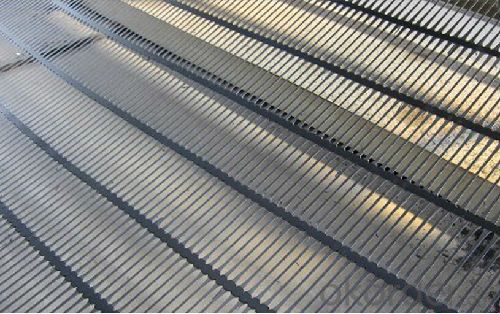
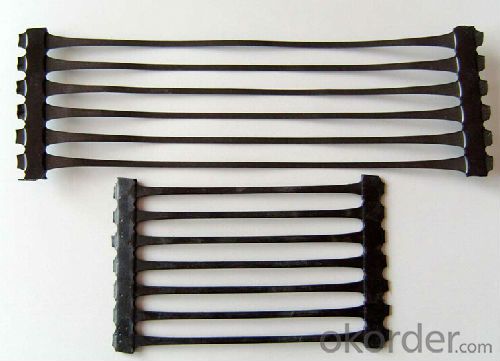
FAQ:
1. What's your payment terms?
T/T, L/C at sight
2. What's your delivery time?
Within 15days against deposit received
3/ What's your package?
WOVEN BAGS
- Q:Can geogrids be used in mining and landfill applications?
- Yes, geogrids can be used in mining and landfill applications. Geogrids are commonly used in these industries to reinforce soil and provide stability. They help in preventing soil erosion, improving load-bearing capacity, and enhancing overall safety and efficiency in mining and landfill operations.
- Q:What are the environmental impacts of using geogrids?
- The environmental impacts of using geogrids can vary depending on factors such as their production, installation, and disposal. However, in general, geogrids can have positive environmental impacts. They can help stabilize soil and reduce erosion, which can prevent the loss of topsoil and decrease sedimentation in nearby bodies of water. Geogrids can also be made from recycled materials, reducing the demand for virgin resources. However, the use of geogrids may also have some negative impacts, such as the energy consumption and greenhouse gas emissions associated with their production and transportation. Additionally, if not properly disposed of, geogrids can contribute to plastic pollution. Overall, while geogrids offer numerous environmental benefits, it is important to consider their life cycle and proper disposal to minimize potential negative impacts.
- Q:How do geogrids improve the performance of mechanically stabilized slopes in high rainfall areas?
- Geogrids enhance the performance of mechanically stabilized slopes in high rainfall areas by providing additional strength and stability to the soil. They act as a reinforcement material, effectively distributing the load and reducing the potential for slope failure. Additionally, geogrids prevent soil erosion by minimizing surface runoff and facilitating water drainage, thus preserving the integrity of the slope even during heavy rainfall events.
- Q:How to do a good job ah? How to start the sale of geotechnical materials
- First, the product is better, the price is right, good service. Our products sell well.
- Q:Can geogrids be used for reinforcement in landfill liners?
- Yes, geogrids can be used for reinforcement in landfill liners. Geogrids are commonly used in landfill engineering to improve the stability and strength of liners by providing reinforcement and preventing soil erosion. They help to distribute loads evenly, enhance long-term performance, and increase the overall stability of landfill liners.
- Q:What are the advantages of using geogrids in soil nailing applications?
- The advantages of using geogrids in soil nailing applications include increased stability and strength of the soil, reduced erosion and soil displacement, improved load distribution, and enhanced resistance against lateral forces. Geogrids act as reinforcements, acting as a tension element to prevent soil movement and improve overall structural integrity. Additionally, geogrids are cost-effective, easy to install, and can be used in a variety of soil conditions, making them a versatile solution for soil nailing applications.
- Q:How many grams per square meter of 15KN Geotextiles
- The square Mick weight of polyester staple fiber geotextiles 15KN is 500 grams
- Q:Who knows the laying method of geogrid?
- Anchoring methodNot since the glass fiber geogrid reinforced asphalt concrete pavement adhesive and prevent pavement and pavement reflection crack, the anchoring construction, but should be paved with glass fiber geogrid, then sprinkle hot asphalt had sticky oil, the construction personnel must wear gloves, construction methods are as follows:A. adhesive layer oil using AH-70 or AH-90 heavy oil hot asphalt, adhesive layer oil specifications and quality should be consistent with the "highway asphalt pavement construction technical specifications" JTJ032-94, using special vehicle spraying. Sticky oil per square meter about 0.4kg-0.6kg.B. laying glass fiber geogrid, should be flat and smooth, tight and transverse lap length should be 50-100mm, longitudinal lap length should be 150-200mm, and according to the spreading direction, the pressure in the front end is under.
- Q:How do geogrids improve the performance of geogrid-reinforced earth walls?
- Geogrids improve the performance of geogrid-reinforced earth walls by providing tensile strength and stabilizing the soil, which helps to prevent the wall from sliding or collapsing. They distribute the forces exerted on the wall more evenly, reducing stress concentration and increasing overall stability. Additionally, geogrids enhance drainage and soil compaction, further enhancing the wall's performance.
- Q:What are the factors that affect the installation of geogrids?
- There are several factors that can affect the installation of geogrids, including soil conditions, site preparation, weather conditions, and proper equipment and installation techniques. Soil conditions play a crucial role as the geogrid needs to be installed in a stable and compacted soil to ensure proper load distribution. Site preparation involves removing any vegetation, debris, or loose soil, and ensuring a level and even surface for the geogrid installation. Weather conditions such as heavy rainfall or extreme temperatures can affect the installation process, as well as the performance of the geogrids. Lastly, using the correct equipment and following proper installation techniques is essential to ensure the geogrids are properly anchored and aligned, ultimately ensuring their effectiveness and longevity.
1. Manufacturer Overview |
|
|---|---|
| Location | 示范:Hebei, China |
| Year Established | 示范:1997 |
| Annual Output Value | 示范:Above US$50 Million |
| Main Markets | 30.00% South America; 20.00% North America; 15.00% Eastern Europe; 15.00% Southeast Asia; 10.00% South Asia; 5.00% Southern Europe; 5.00% Africa |
| Company Certifications | ISO 9001:2008 |
2. Manufacturer Certificates |
|
|---|---|
| a) Certification Name | |
| Range | |
| Reference | |
| Validity Period | |
3. Manufacturer Capability |
|
|---|---|
| a)Trade Capacity | |
| Nearest Port | Tianjin;Qingdao;Shanghai |
| Export Percentage | |
| No.of Employees in Trade Department | 21-50 People |
| Language Spoken: | English;Chinese |
| b)Factory Information | |
| Factory Size: | Above 100,000 square meters |
| No. of Production Lines | Above 12 |
| Contract Manufacturing | OEM Service Offered;Design Service Offered |
| Product Price Range | High;Average |
Send your message to us
HDPE Uniaxial Geogrid with High Tensile Strength for Retaining Wall/Road Consturction
- Loading Port:
- China Main Port
- Payment Terms:
- TT or LC
- Min Order Qty:
- 5000 Square Meters m²
- Supply Capability:
- 12000 Square Meters Per Week m²/month
OKorder Service Pledge
OKorder Financial Service
Similar products
New products
Hot products
Hot Searches
Related keywords
